Crypto Airdrops: How to Make Them Successful? 5 Big Projects to Learn From
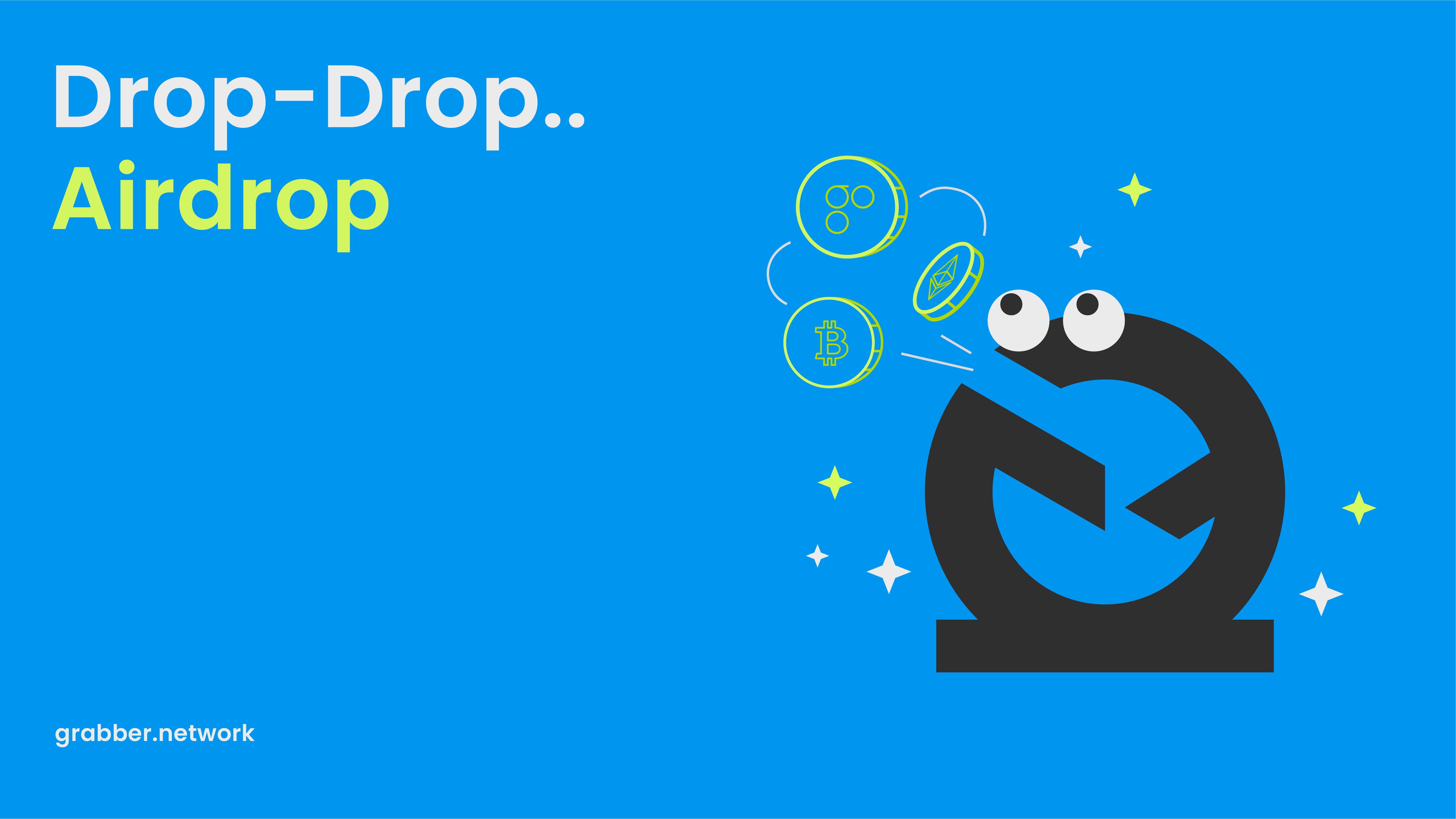
Airdrop is a free distribution of tokens or coins to users (of course, in a limited amount). Airdrops are often aimed at popularizing a completely new coin that is not yet on the exchanges or attracting people to a new project. In addition, developers can distribute free tokens to existing cryptocurrency holders in a certain proportion. This allows them to quickly achieve wide-scale adoption, attract a new audience and create hype.
For users, an airdrop is an opportunity to get free coins or tokens and get to know the platform that offers them. Some users managed to receive airdrops equivalent to 30 thousand USD, or even more. This is, of course, if they were able to wait for the prices to rise, and did not sell everything all at once, succumbing to the instincts of the crowd.
For projects, an airdrop is an opportunity to attract interested users. And get an active, engaged audience that will use their services.
However, it is clear that not all airdrops are created equal, and the hype surrounding new tokens can sometimes subside pretty fast, leaving investors and even issuers at a loss while recipients rush out the door to sell tokens as quickly as possible. How can you avoid that? And what did the projects that airdropped their tokens and are now worth billions do correctly?
5 Successful Crypto Airdrops, and What You Can Learn From Them
1. HEX — how to do pure hype right
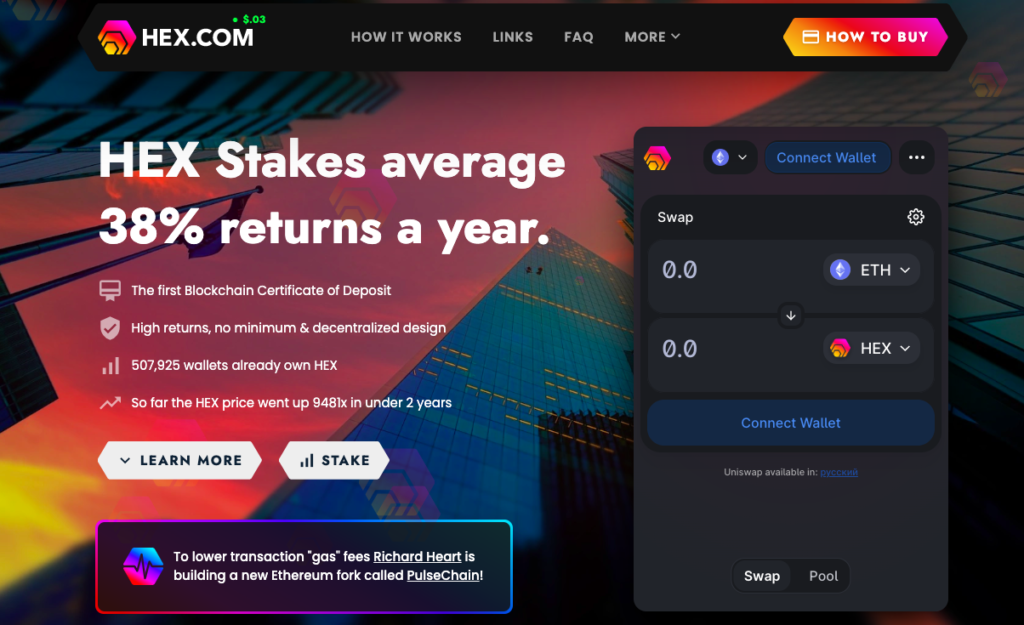
A highly controversial currency invented by Richard Heart. Claims to be <better Bitcoin> while shamelessly promoting itself akin to many scam currencies. However, these currencies are usually lucky to get away with a few million USD. They don’t reach a US$80 billion market cap and don’t have over 300,000 connected accounts. How did Richard Heart achieve this? Easy: massive airdrops.
Because crypto wallets and blockchain information are part of a publicly distributed ledger, all users of blockchain have full transparency into the wallets and distribution of tokens. Therefore, it is easy to distribute rewards to users of any cryptocurrency.
Back in 2019, Richard Heart airdropped HEX tokens to every user that held BTC (this is the so-called <holder airdrop>). All you had to do is go on his website, connect HEX to your MetaMask wallet, paste your BTC address and confirm you have Bitcoins. You then could stake your HEX at a rate of 10,000 HEX to 1 BTC. You didn’t spend anything, and you gained something (up to $4800 in HEX for each BTC at some point). No user would want to miss out on that! And once you get your users, you can start to offer them additional functionality to make them stay.
This simple scheme turned out to be ridiculously successful. At first, almost no one claimed their free HEX. After all, the cost of the new currency was so low that your airdrop was worth just a few cents. It wasn’t worth wasting any time on. However, Richard’s tokenomics (<hexonomics>) ensured it was best to hold on to your tokens, with staking turning up big percentages. Almost no one was selling their HEX, so demand remained higher than supply. When the currency started rising in price, even more so. In the first year alone, it grew 150 times, and in the second year — another 60 times. This made Richard Hart a multi-billionaire, allowing him to buy all sorts of luxury items, turn himself into a character and market his chain even more aggressively, creating a positive feedback loop.
And there is your first lesson: big airdrops, if marketed well enough, can bring you a lot of users at almost no cost. If you can then somehow retain these users and keep them from selling your stuff, you may have a potential winner in just a few years.
A similar large airdrop to BTC holders was conducted by Stellar (XLM) in 2017. This project later also became successful, with currency managing to grow in value and receiving fairly wide adoption. At one point, Stellar’s market cap reached $15 billion, and now it’s still almost $3 billion, even 8 years after launch and in the height of crypto winter.
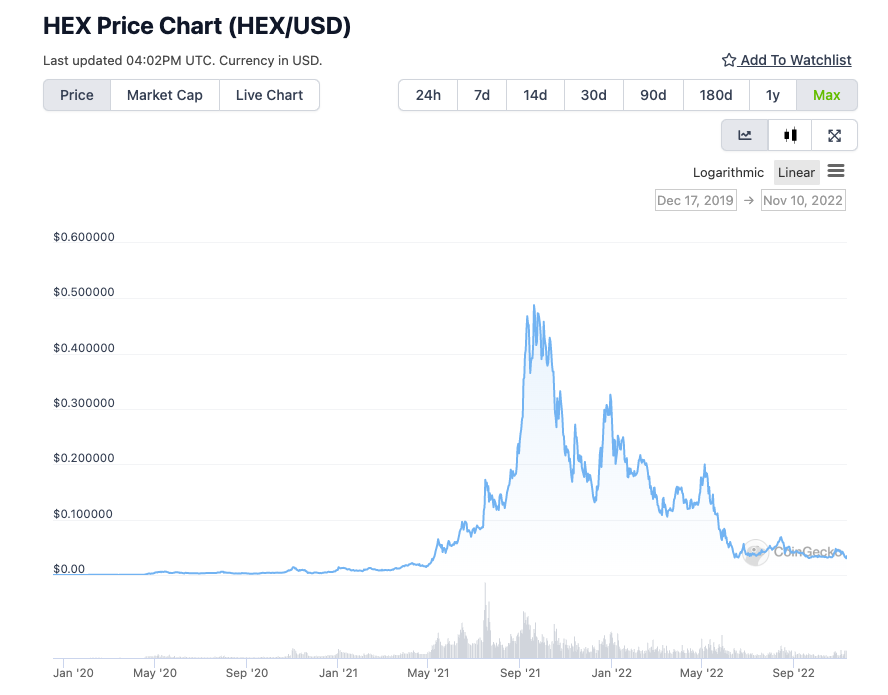
Richard Heart’s next project is PulseChain, which aims to copy all the ERC-20 and ERC-721 tokens from Ethereum. As with HEX and BTC, they will be deposited to the wallets of users who claimed them. Richard Heart says that this is <the largest airdrop in history> and hopes it would get his new project a massive head start.
Such a huge airdrop will not only provide a great marketing slogan and encourage users to try out a new network, but also allow projects to immediately jump to PulseChain without having to start from scratch. Their user base already has their tokens, so all that’s left to do is connect to the new network themselves. That is why, despite not having much clout behind it, PulseChain already has more than 200 projects signed up for its launch. Every established Ethereum product is potentially just a few clicks away from being fully operational on PulseChain.
2. Aptos — have a lot of money

Several ex-Meta employees, trying to pick up the mantle of what Facebook was trying to build with Diem and Libra, raised $200 million in March 2022 from Tiger Global, Multicoin Capital, Coinbase, FTX, and others. Their startup became a unicorn 7 months before launch. With almost unlimited cash, they conducted a massive airdrop two days after release, on October 19, 2022, to ensure the wide-scale adoption of their Layer-1 network.
There were two ways to qualify for the airdrop: either by completing an application to help with a network stress test or by minting a commemorative Aptos NFT. Only the original minters of these NFTs were eligible, not the secondary owners. APT tokens could be claimed through the official Aptos Community page on their website, and the invites were distributed via email. To avoid scams and misinformation, public Discord was closed for a day, and the team was constantly monitoring Twitter and other social networks.
Out of the 1 billion total supply, 20 million APT tokens were dropped to 110,235 participants. Overall, $260 million was distributed in just a single day. One of the largest (in terms of immediate monetary value) airdrops ever conducted. Each user received $2350 on average, and there were a lot of users this time.
Despite all precautions, the launch of the project did not go smoothly. Many people did not receive their tokens, despite being eligible. It also turned out that 49% of all tokens will be allocated to original investors and the project development team. Users did not like these tokenomics and raised questions about the future potential of the project. Besides, airdropped tokens could be sold almost immediately on any centralized exchange. As a result, Aptos price went down 30-40% after launch, overall settling near the original $1 billion valuation.
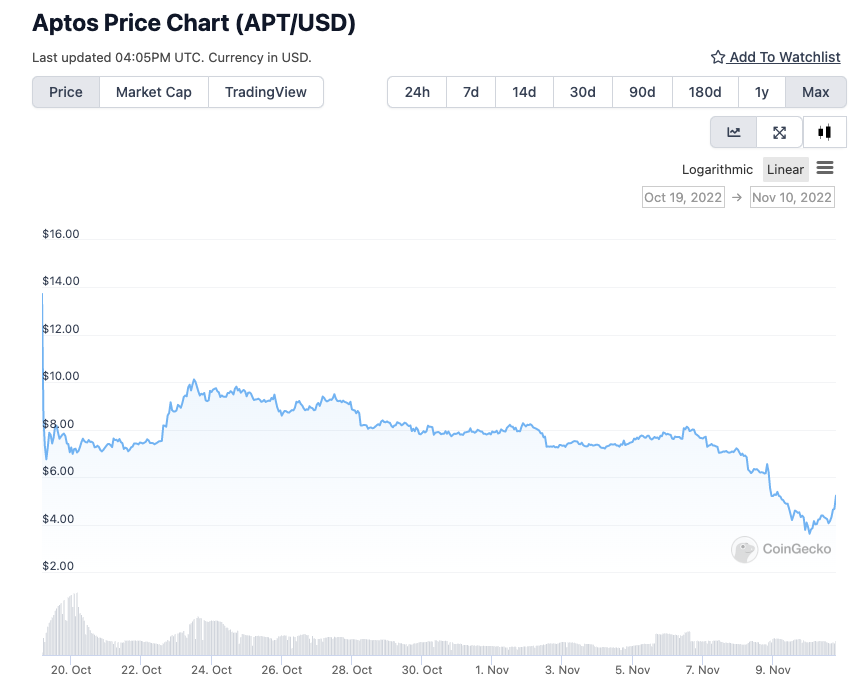
This is not a success story for venture investors here — at least not yet. They clearly wanted more: in recent rounds, the project was estimated at $2-$4 billion. But for regular users who have received significant capital in the new blockchain, and for its creators who quickly gained a large audience on a par with other Layer-1 networks, this strategy has already brought some tangible benefits. And the price of the token remains rather stable.
As is often the case, whether an airdrop succeeds or not often comes down to the project it is associated with. Having big pockets and the Meta brand around it means Aptos is highly likely to have some staying power. Airdrops of established, respected protocols and services that have clear utility tend to retain or even increase their value. Large and established projects in the crypto space become value magnets in their own right, as long as they don’t undermine users’ trust.
3. Binance — be nimble

HEX, PulseChain, and Aptos only did airdrops once, at the very beginning, and invested tens of millions of dollars into them. It was a huge and very expensive marketing ploy. And it worked: all these projects now have tens of thousands of active users, with HEX enjoying a $7 billion market cap. However, this is not the only way to do airdrops in crypto.
If you don’t have a huge marketing pull and can’t promote your launch to the same degree as Richard Heart or ex-Meta employees with venture capital funding, you may want to attach yourself to a successful platform that is offering airdrops to its users. It may also be beneficial to employ multiple airdrops in succession, depending on your roadmap and overall marketing goals. This gives users a reason to stay invested in your project and keep coming back to it to see what has changed.
This can be achieved in a myriad of ways, but a prime example is a bounty airdrop. Cryptocurrency bounty airdrops happen when the user completes certain tasks. These tasks often include raising awareness of the project by posting on social media and tagging the company or retweeting a recent tweet about the project. There may also be bonuses for individuals who recruit other users, subscribe to the project’s newsletter, or join the company’s Discord channel.
In exchange for completing tasks, users often receive points corresponding to the size of the reward they will get. Users may also be required to earn a certain number of points before they can enter the draw. For example, a user may qualify for a draw after earning 300 points, with each completed task worth 100 points each.

Bounty airdrops are often employed by centralized exchanges. Binance, in particular, likes to give users who complete certain tasks a few tokens from projects running in the BNB ecosystem. These tasks may include staking BNB, trading certain crypto pairs, winning mini-games, depositing specific tokens, visiting project sites, buying NFTs, and so on. This is actually a great way to distribute new tokens for them, as they would have airdropped them regardless to spread awareness of new launching projects, but now they also get to increase user engagement and activity within their service.
It’s all just a huge game to them, and it works. The community is craving for hype; if people get bored, they tend to explore their favorite platform and are happy to find that they can complete some tasks for a reward. Such projects as Swipe (SXP), Bella, Boba Network, Flare, ApeNFT, and many others gained a decent following through Binance airdrops. Now, these are all stable projects worth tens to hundreds of millions of dollars.
4. Decred — take care of your people

In January 2016, Decred, a new blockchain that combined Proof of Work and Proof of Stake, airdropped 840,000 DCR (worth around $600,000 at the time) to early enthusiasts who signed up for it with their email and an address on Decred network. Instead of dropping free tokens to everybody they could get their hands on, they chose to give significantly more value, but only to those that really wanted to contribute to the network and were aware of the idea behind it.
Their strategy involved premining 8% of all coins, with 4% going to the developers and 4% being airdropped to users. All in all, around 1.7 million out of the total supply of 21 million ended up being distributed, while the rest was left to be mined and earned through staking.
Signups for airdrop were open for just 1 month, so only those that actively monitored Decred website and affiliated media were privy to the event. The signup form required applicants to provide an email, a link to their online profile, and write a letter explaining why the participant is interested in their project and how they can contribute to Decred moving forward.
It was quite an extensive list of tasks, but this is actually an example of a standard airdrop — giving away tokens to users who have signed up with their wallet and email or passed KYC verification. Decred were just making extra sure they were giving away tokens to the right people.
Of the 8,793 questionnaires submitted, only 2,972 participants were selected after the final review. It was just enough to lay the foundation for a decentralized network. Decred was now harder to attack during its infancy, as there was no single point of failure, and it had its first functional nodes. The blockchain then grew and ended up being one of the earliest successful PoS projects.
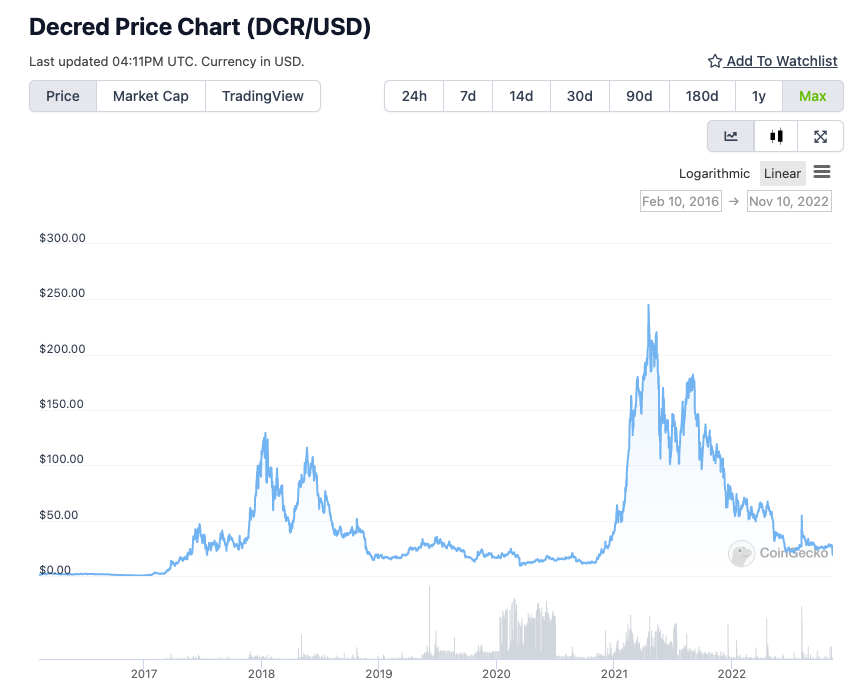
Each participant received the equivalent of $200. The price of DCR coins was declining during the first year, while the project established its presence in the crypto community. However, after that, the price rose rapidly — more than 100 times in the second year. The project remained rather niche, but still gained billions in market value. Most of all, early adopters were rewarded quite handsomely, with their airdrop value reaching $32,500, not to mention all the coins they received from mining and staking. The community is small but remains active and contributes to the project to this day.
5. Uniswap & dYdX — when decentralization is key
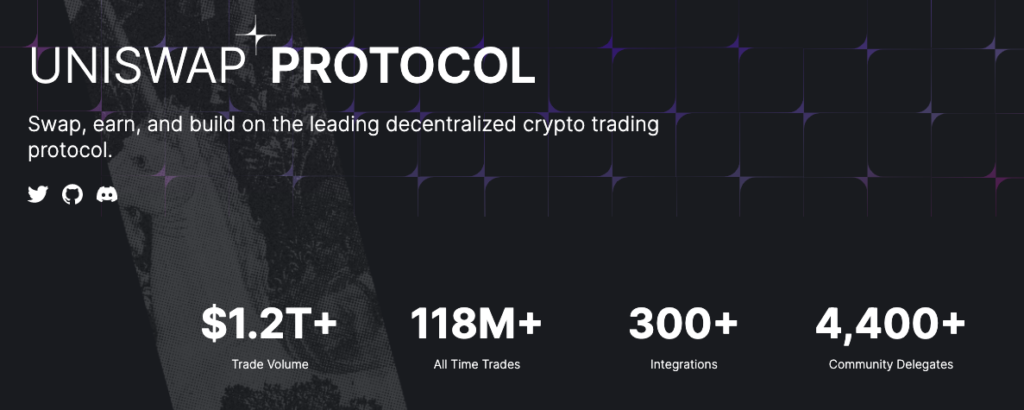
Another example of taking care of your community with airdrops was offered by the leading decentralized exchange, Uniswap. It launched in 2018 and in September 2020 announced that all Ethereum addresses that had used its service were eligible to claim 400 UNI governance tokens — then worth around $1,200. This exclusive airdrop immediately increased the proliferation of newly launched tokens in the ecosystem and ensured that DAO-style voting could occur without hindrance. It also added profitability potential for using and investing in Uniswap.
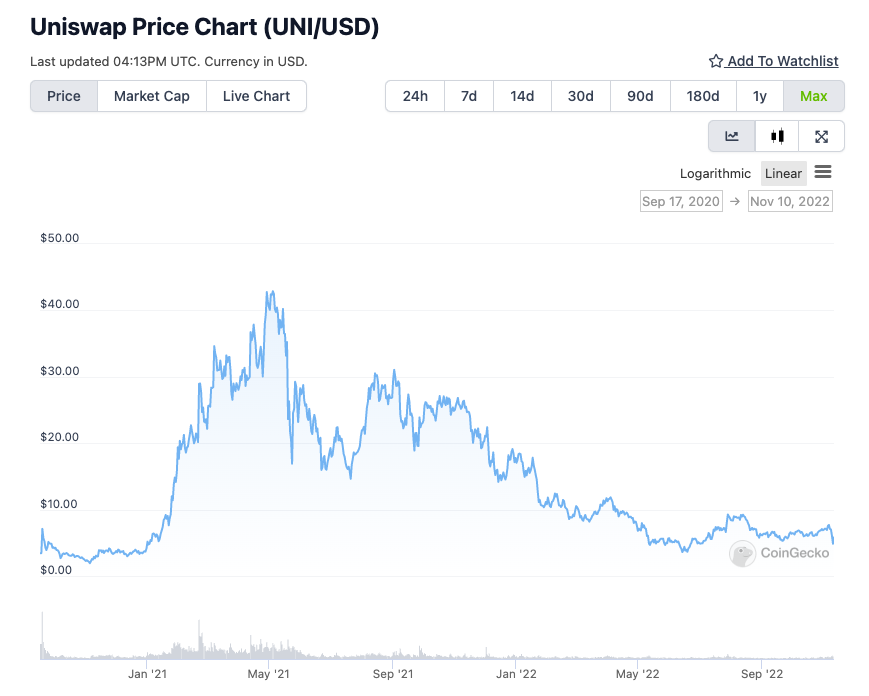
Although tokens were given away for free, demand for them remained high, confidence in the exchange increased dramatically, and the price of UNI jumped tenfold over the next six months. With each original Uniswap user becoming increasingly wealthier, more respected, and more active on various platforms, Uniswap has established itself in the minds of many as the undisputed №1 DEX. It is currently valued at over $5.1 billion.
Exactly one year later, in September 2021, another decentralized exchange, dYdX, launched an airdrop with almost the same rules as Uniswap. It gave away $4,000 to $135,000 worth of DYDX tokens to its early adopters, depending on the client’s trading volume. The protocol airdropped 7,5% of its total supply, 75 million governance tokens, each worth around $11 at the time. The total value of the airdrop was over $825 million, distributed among 32,700 users. Overall, it was a huge success, especially for the clients involved. As for the DEX, it was a big step towards security, turning dYdX into a fully decentralized and community-controlled platform.
A Few Tips on How to Make Your Airdrop More Successful
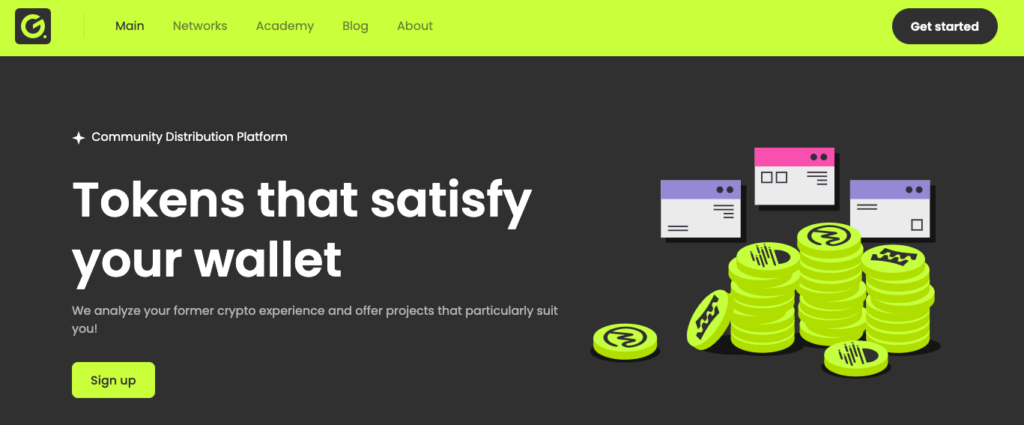
- Drop to people who actually use crypto and are relevant to your project. Dropping tokens into random wallets of ETH or BTC holders is one way to do this, but it is very overdone at this point. A large percentage of people are simply holding their crypto, without putting it to any active use. They don’t care about any new tokens they can receive out of nowhere, and are more suspicious of them than anything else. Your main goal is to find people who are active and purposeful with their crypto. Doing this is an art in itself.
- Reward engagement. You can cultivate your own community through social media and other marketing efforts. You can say that people who promote your project or are engaged with it in other ways will receive more airdrops. Achievements can be recognized through a leaderboard or a badge system. Rewarding engagement is a surefire way to build loyalty and form a mutually beneficial relationship with your community.
- Make claiming as user-friendly as possible. Getting something completely for free and without any effort is suspicious to some users. So it’s best if they do at least some action to display that they are interested. Claiming an airdrop doesn’t have to be a long and painful process for them. Registering for an airdrop should be a simple task with minimal input. Consumers know the value of their private data at this point, and it’s important not to compromise their privacy. Fortunately, you can check wallet activity and transaction history on the services that are relevant to you using public blockchain information. You do not need to openly engage the user and force them to share any personal data with you.
Overall, unfortunately, making your airdrop successful is not as easy today as it was in 2018. Now ordinary airdrops without huge names and huge pockets behind them do not stand out from the crowd and rarely lead to success. There is a huge caste of users known as <airdrop hunters> that are out to get as much free stuff as they can. These users don’t bring any value to the projects they join, as they don’t plan on using their features. Their only goal is to dump the stuff they got for free, preferably as fast as possible, and move on to the next thing. This tends to decrease the value of currencies or tokens, instead of increasing it over time as one would hope.That is exactly why we created Grabber. It is an awesome marketing tool that determines users with the relevant experience to your crypto project, based on their existing on-chain activities. This allows you to connect to the desired audience and ensures your airdrop or any other marketing efforts are a success. We help projects distribute more tokens to the users who will actually provide value rather than dump tokens at the first opportunity. This is the best way to ensure the long-term development and success of your platform and its native tokens.